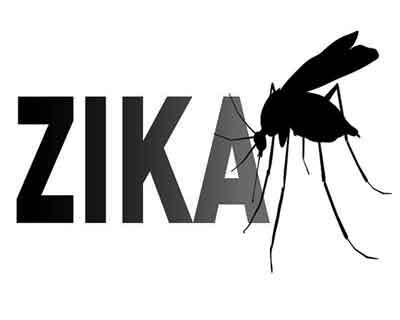- Home
- Editorial
- News
- Practice Guidelines
- Anesthesiology Guidelines
- Cancer Guidelines
- Cardiac Sciences Guidelines
- Critical Care Guidelines
- Dentistry Guidelines
- Dermatology Guidelines
- Diabetes and Endo Guidelines
- Diagnostics Guidelines
- ENT Guidelines
- Featured Practice Guidelines
- Gastroenterology Guidelines
- Geriatrics Guidelines
- Medicine Guidelines
- Nephrology Guidelines
- Neurosciences Guidelines
- Obs and Gynae Guidelines
- Ophthalmology Guidelines
- Orthopaedics Guidelines
- Paediatrics Guidelines
- Psychiatry Guidelines
- Pulmonology Guidelines
- Radiology Guidelines
- Surgery Guidelines
- Urology Guidelines
1.2 billion people at Zika risk in India: Study

Paris : At least 2.6 billion people, over a third of the global population, live in parts of Africa, Asia and the Pacific where Zika could gain a new foothold, researchers warned, with 1.2 billion at risk in India alone.
These are people who reside in as-yet unaffected parts of the world with the right climate and abundant mosquitoes for the virus to settle, spread and propagate an epidemic like the one besetting the Americas and Caribbean, they said.
"According to our most conservative scenario, populations living within the geographical range for Zika virus were highest in India (1.2 billion people), China (242 million), Indonesia (197 million) Nigeria (179 million), Pakistan (168 million), and Bangladesh (163 million)," said a study.
This is a theoretical possibility, however.
Whether or not the mosquito-borne virus would take off in any of these countries would be determined largely by a crucial unknown factor: Do the people there have immunity?
Sporadic cases of Zika have previously been reported in Africa and Asia, but nobody knows whether they were widespread enough for populations to acquire resistance to the virus.
Another mystery is whether immunity to the African Zika strain would offer protection against the Asian strain currently in circulation.
"If Zika immunity is widespread, introduced Zika will fizzle out fast," Derek Gatherer of Lancaster University said in a comment on the study published in The Lancet Infectious Diseases.
"On the other hand, if it enters another unprotected population, we may see a repeat of what we have already seen in Brazil and other parts of Latin America."
- Travelling virus -
The research team used air travel data, maps of mosquito spread and climate conditions, and information on population density and health spending to draw up an epidemiological risk model.
Benign in most people, Zika has been linked to a form of severe brain damage called microcephaly which causes newborns' heads to be abnormally small, and to rare adult-onset neurological problems such as Guillain-Barre Syndrome (GBS), which can result in paralysis and death.
In an outbreak that started mid-2015, more than 1.5 million people have been infected with Zika in Brazil, and more than 1,600 babies born with abnormally small heads and brains. Seventy countries and territories have reported local mosquito-borne Zika transmission, with Brazil by far the hardest hit.
Seventeen countries have reported cases of microcephaly or other central nervous system malformations in babies, and eighteen signalled an increase in GBS, according to the World Health Organization.
There have also been rare cases of person-to-person sexual transmission.
"As the Zika virus epidemic in the Americas intensifies and expands, hundreds, and possibly thousands, of infected travellers are now transporting the virus to distant regions of the world," the researchers wrote.
If an infected person arrives in an unaffected country, Zika can spread if a local mosquito feeds on that individual, picks up the virus, and transfers it to another human with its next blood meal.
"The potential for epidemics to occur in parts of Africa and the Asia-Pacific region is particularly worrying given the vast numbers of people who are potentially susceptible to Zika virus and are living in environments where health and human resources to prevent, detect and respond to epidemics are limited," said the paper.
A key risk area identified was Angola, due to its strong cultural ties, and travel links, with Brazil.
The southern African country has an ongoing epidemic of yellow fever, caused by a virus which, like Zika, is transmitted by the Aedes aegypti mosquito.
In Asia, India was particularly at risk, the team found.
China received many times more travellers per year from Zika-affected parts of the Americas, but spent more on healthcare.
The study authors "have produced a helpful guide to where our surveillance should be concentrated," said Gatherer.

Disclaimer: This site is primarily intended for healthcare professionals. Any content/information on this website does not replace the advice of medical and/or health professionals and should not be construed as medical/diagnostic advice/endorsement or prescription. Use of this site is subject to our terms of use, privacy policy, advertisement policy. © 2020 Minerva Medical Treatment Pvt Ltd